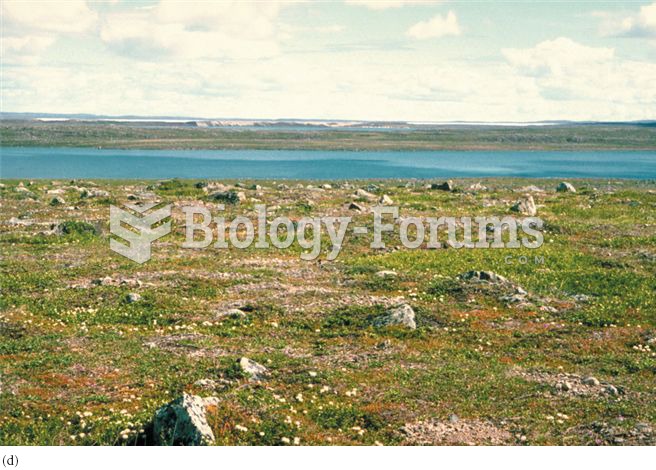Answer to Question 1
Most of us are familiar with small blocks of iceice cubes that you put in drinks. That ice is brittle; when it is stressed (if you hit it with something hard) it will fracture. At higher pressures, however, deeper within a glacier, slowly applied stress causes the ice to deform more like a plastic. This stress increases as you move deeper into the ice and causes the ice to flow (see the Box Thinking Quantitatively: Movement of Glaciers). If the ice is frozen to the bed, then the flow at the base is zero and the maximum flow is somewhere above the influence of the bed. Bed. Where there is liquid water at the base, or where the bed is made up of unconsolidated material (particularly if that also has a high water content)then the glacier can slide over the bed. In this case, the downslope movement has two components, one due to plastic deformation and one to basal sliding (Figure 6-7c in the main text).
Answer to Question 2
Melting permafrost results in lakes and water-logged soil with anaerobic (low oxygen levels) conditions that create an environment in which methane producing organisms can flourish. As we will see in Chapter 15, methane is an important greenhouse gas and the atmospheric concentration has more than doubled over pre-industrial levels. Chapter 15 also shows that the rate of increase in atmospheric concentration has slowed or stopped in recent years. This is potentially good news for greenhouse warming, but meting permafrost could change this outlook. Methane emission form regions of melting permafrost could double to over 100 million metric tons per year. However, there is considerable uncertainty in these numbers and some estimates put the potential for methane emissions much higher. .







